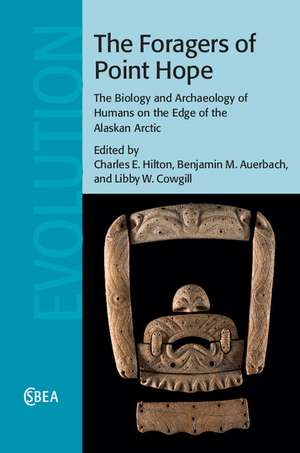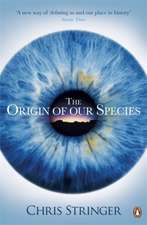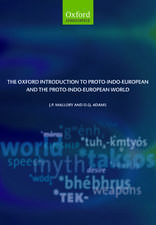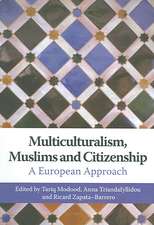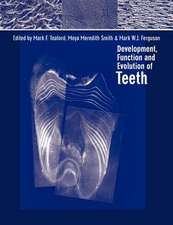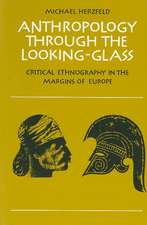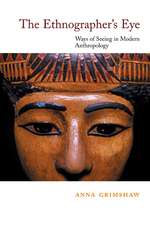The Foragers of Point Hope: The Biology and Archaeology of Humans on the Edge of the Alaskan Arctic: Cambridge Studies in Biological and Evolutionary Anthropology, cartea 68
Editat de Charles E. Hilton, Benjamin M. Auerbach, Libby W. Cowgillen Limba Engleză Hardback – 23 iul 2014
| Toate formatele și edițiile | Preț | Express |
|---|---|---|
| Paperback (1) | 325.12 lei 6-8 săpt. | |
| Cambridge University Press – 24 iun 2020 | 325.12 lei 6-8 săpt. | |
| Hardback (1) | 460.98 lei 3-5 săpt. | |
| Cambridge University Press – 23 iul 2014 | 460.98 lei 3-5 săpt. |
Din seria Cambridge Studies in Biological and Evolutionary Anthropology
-
 Preț: 479.80 lei
Preț: 479.80 lei -
 Preț: 390.84 lei
Preț: 390.84 lei - 14%
 Preț: 750.86 lei
Preț: 750.86 lei - 11%
 Preț: 700.59 lei
Preț: 700.59 lei - 14%
 Preț: 722.61 lei
Preț: 722.61 lei - 9%
 Preț: 846.79 lei
Preț: 846.79 lei - 11%
 Preț: 566.50 lei
Preț: 566.50 lei -
 Preț: 367.91 lei
Preț: 367.91 lei - 11%
 Preț: 693.77 lei
Preț: 693.77 lei -
 Preț: 356.37 lei
Preț: 356.37 lei - 11%
 Preț: 633.61 lei
Preț: 633.61 lei - 11%
 Preț: 619.90 lei
Preț: 619.90 lei -
 Preț: 396.29 lei
Preț: 396.29 lei -
 Preț: 279.00 lei
Preț: 279.00 lei -
 Preț: 304.74 lei
Preț: 304.74 lei -
 Preț: 371.32 lei
Preț: 371.32 lei -
 Preț: 376.06 lei
Preț: 376.06 lei -
 Preț: 332.66 lei
Preț: 332.66 lei -
 Preț: 421.01 lei
Preț: 421.01 lei -
 Preț: 303.60 lei
Preț: 303.60 lei -
 Preț: 309.27 lei
Preț: 309.27 lei -
 Preț: 376.62 lei
Preț: 376.62 lei - 11%
 Preț: 424.92 lei
Preț: 424.92 lei -
 Preț: 308.50 lei
Preț: 308.50 lei -
 Preț: 317.11 lei
Preț: 317.11 lei -
 Preț: 453.33 lei
Preț: 453.33 lei -
 Preț: 322.41 lei
Preț: 322.41 lei -
 Preț: 433.83 lei
Preț: 433.83 lei -
 Preț: 435.78 lei
Preț: 435.78 lei -
 Preț: 471.93 lei
Preț: 471.93 lei - 11%
 Preț: 474.71 lei
Preț: 474.71 lei -
 Preț: 428.90 lei
Preț: 428.90 lei - 14%
 Preț: 934.70 lei
Preț: 934.70 lei
Preț: 460.98 lei
Preț vechi: 517.95 lei
-11% Nou
Puncte Express: 691
Preț estimativ în valută:
88.21€ • 92.10$ • 73.00£
88.21€ • 92.10$ • 73.00£
Carte disponibilă
Livrare economică 15-29 martie
Preluare comenzi: 021 569.72.76
Specificații
ISBN-13: 9781107022508
ISBN-10: 1107022509
Pagini: 315
Ilustrații: 49 b/w illus.
Dimensiuni: 157 x 236 x 21 mm
Greutate: 0.7 kg
Ediția:New.
Editura: Cambridge University Press
Colecția Cambridge University Press
Seria Cambridge Studies in Biological and Evolutionary Anthropology
Locul publicării:New York, United States
ISBN-10: 1107022509
Pagini: 315
Ilustrații: 49 b/w illus.
Dimensiuni: 157 x 236 x 21 mm
Greutate: 0.7 kg
Ediția:New.
Editura: Cambridge University Press
Colecția Cambridge University Press
Seria Cambridge Studies in Biological and Evolutionary Anthropology
Locul publicării:New York, United States
Cuprins
List of contributors; Acknowledgements; Foreword; Preface; 1. Introduction: humans on the edge of the Alaskan Arctic Charles E. Hilton, Benjamin M. Auerbach and Libby W. Cowgill; Part I. Regional Archaeological and Biological Context: 2. The archaeology of north Alaska: Point Hope in context Anne M. Jensen; 3. The Ipiutak cult of Shamans and its warrior protectors: an archaeological context Owen K. Mason; 4. Ancestor-descendant affinities between the Ipiutak and Tigara at Point Hope, AK in the context of North American Arctic cranial variation Blaine Maley; Part II. Biological Variation among the Foragers of Point Hope: 5. Contrasting of the Ipiutak and Tigara: evidence from incisor microwear texture analysis Kristin L. Krueger; 6. The diets of the Ipiutak and Tigara (Point Hope, Alaska): evidence from occlusal molar microwear texture analysis Sireen El Zaatari; 7. Postcranial pathological lesions in precontact Ipiutak and Tigara skeletal remains of Point Hope, Alaska Charles E. Hilton, Marsha D. Ogilvie, Megan Latchaw Czarniecki and Sarah Gossett; 8. Bone strength and subsistence activities at Point Hope Laura L. Shackelford; 9. Postcranial growth and development of immature skeletons from Point Hope, Alaska Libby W. Cowgill; Part III. Contexts, Conclusions and Commentaries: 10. Morphologies from the edge: perspectives on biological variation among the Late Holocene inhabitants of the northwestern North American Arctic Benjamin M. Auerbach; 11. The Ipiutak spirit-scape: an archaeological phenomenon William W. Fitzhugh; 12. Point Hope in certain contexts: a comment Don E. Dumond; References; Index.
Recenzii
'This volume represents a true anthropological reconstruction of life among the prehistoric foragers from Point Hope, Alaska. It includes important perspectives regarding the ecological realities of adaptation in this harsh environment that are integrated into the perception of this landscape by the Ipiutak and Tigara people themselves. The work is a must-read for all who find interest in hunter-gatherer populations, and scholars who value integrated anthropological research.' Daniel H. Temple, University of North Carolina, Wilmington
'Point Hope, a narrow spit of land on the Arctic Ocean, is something of an enigma in Alaskan prehistory. Since the pre-WWII excavations of its varied habitation and cemetery sites the archaeology has been well chronicled, though not with unqualified acceptance. In addition, with exceptions, the ancient inhabitants themselves received little attention - as in the lack of research on some 500 recovered Ipiutak and Tigara skeletons. Finally, after 70+ years this superbly edited volume addresses that neglect. Between up-to-date accounts of the archaeological context and thoughtful comment by highly respected circumpolar researchers, a series of comprehensive yet highly readable chapters by biological anthropologists and bioarchaeologists give insight into the origins, affinities, and everyday lives of people who once called Point Hope home. Though long overdue, this much-needed biocultural insight was worth the wait.' Joel D. Irish, Liverpool John Moores University
'This volume provides the reader with almost everything one would want to know about the archaeology and skeletal biology of the prehistoric Ipiutak and Tigara samples from a tiny, but important strip of land in Point Hope, Alaska. With a wide array of well-written chapters on topics as diverse as the Ipiutak 'spirit-scape' to dental microwear to paleopathology, from growth and development to the samples' genetic affinities inferred from cranial morphology, this book provides much-needed contextual knowledge on this fascinating skeletal sample, and will be a go-to resource for those interested in the bioarchaeology of circumpolar peoples.' Trenton W. Holliday, Tulane University
'Point Hope, a narrow spit of land on the Arctic Ocean, is something of an enigma in Alaskan prehistory. Since the pre-WWII excavations of its varied habitation and cemetery sites the archaeology has been well chronicled, though not with unqualified acceptance. In addition, with exceptions, the ancient inhabitants themselves received little attention - as in the lack of research on some 500 recovered Ipiutak and Tigara skeletons. Finally, after 70+ years this superbly edited volume addresses that neglect. Between up-to-date accounts of the archaeological context and thoughtful comment by highly respected circumpolar researchers, a series of comprehensive yet highly readable chapters by biological anthropologists and bioarchaeologists give insight into the origins, affinities, and everyday lives of people who once called Point Hope home. Though long overdue, this much-needed biocultural insight was worth the wait.' Joel D. Irish, Liverpool John Moores University
'This volume provides the reader with almost everything one would want to know about the archaeology and skeletal biology of the prehistoric Ipiutak and Tigara samples from a tiny, but important strip of land in Point Hope, Alaska. With a wide array of well-written chapters on topics as diverse as the Ipiutak 'spirit-scape' to dental microwear to paleopathology, from growth and development to the samples' genetic affinities inferred from cranial morphology, this book provides much-needed contextual knowledge on this fascinating skeletal sample, and will be a go-to resource for those interested in the bioarchaeology of circumpolar peoples.' Trenton W. Holliday, Tulane University
Descriere
Sixty years after their discovery, this is the first anthropological synthesis of the ancient Arctic foragers of Point Hope, Alaska.
